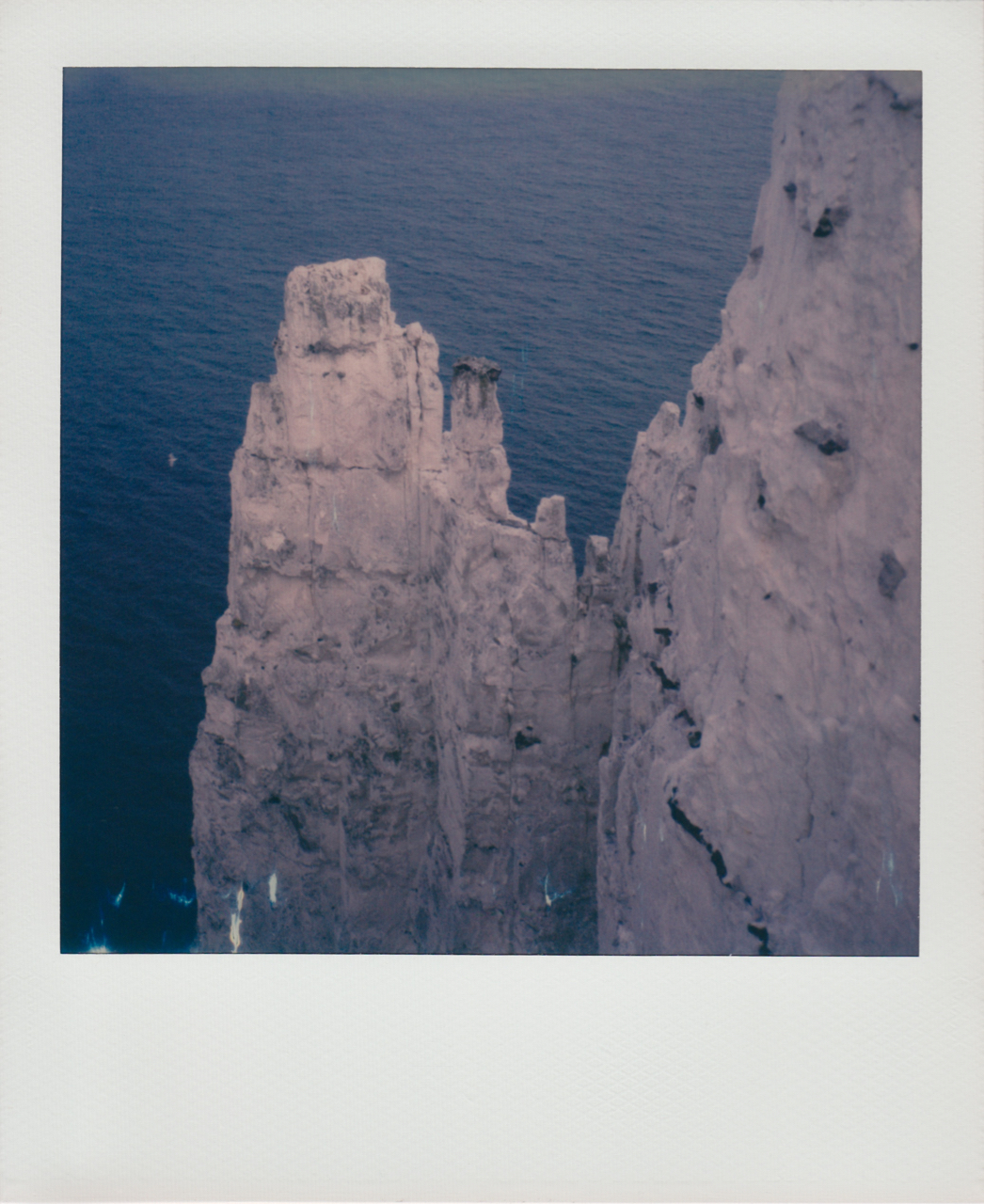"MIGRATE": A Reminder That The Refugee Crisis Is Still Happening
Written and Photographed By Cyrus Mahboubian
To many, the refugee crisis is just a story seen on the news, in the paper, as viral posts on social media, and sadly, nothing more than that. You try to empathize when reading about the horrible atrocities, hoping that your deepest sympathies will somehow find their way to the victims, but really what else can you do? Frustrated by the lack of awareness and social impact amongst his peers, photographer Cyrus Mahboubian decided to make up for it. Born in London to a family of Iranian descent, the crisis has hit much closer to home for Cyrus and his family. In collaboration with his co-founder Sandra Nuoramo, they created MIGRATE, a book featuring new work by eight photographers centered around the theme of migration, all shot on polaroids. Below he tells us the motivation behind producing a body of work with social impact and the tragic irony behind it.
The war in Syria is now in its seventh brutal year. With the bombardment of East Ghouta, a suburb just outside the capital Damascus, it’s clear to see that the devastation has no end in sight.
The war has caused, according to the UN, the largest migration of people since the Second World War, resulting in a refugee crisis that is truly catastrophic. Millions of people have fled their homes seeking safety and better lives. For so many of them, their perilous journeys have only led them to refugee camps that have sprung up everywhere in Europe.
Living in the UK, we aren’t exposed to the refugee crisis in the same way that our neighbours in continental Europe are. Being an island, we are inevitably harder to access and thus haven’t received anywhere near the number of refugees that a lot of European countries have. It’s easy to go about our first-world lives – to go out for coffee, brunch, a film or a gig – and forget, at least temporarily, that it’s even happening.
Since the war began, much of what we have seen in news reports is negative and disheartening. We’ve seen people in cities across Europe marching against the refugees who have come to their neighbourhoods, often with the refugee population looking on. Some marches become violent, but even when they are peaceful the situation appears decidedly bleak.
Over the last few years I have felt a personal connection to the situation. I am of Iranian heritage. I was born in London, but my family only settled in the UK after the Iranian Revolution of 1979. The revolution, and the war with Iraq that started soon after and lasted for most of the ‘80s, made life in Iran dangerous. Thousands of Iranians fled the country to seek asylum abroad, forcing my relatives to spread throughout Europe and the United States. When I was younger I didn’t really comprehend why this was the case, but I now understand the political and historical circumstances that caused it.
In conversations with my relatives, there is a profound sense that leaving the place one considers home isn’t something anyone ever really wants. One only leaves because something drives them away, like the dangers of war, the lack of decent living conditions or a desire to improve life for one’s family.
I conceived the MIGRATE project a year ago with my co-founder Sandra Nuoramo. Sandra and I are members of a committee called Next Generation London; a group of young professionals based in London who, alongside our regular jobs, volunteer in support of Unicef. Often this is through fundraising, and other times by simply raising awareness of issues that endanger children around the world.
We had the idea to ask a group of photographers to help us raise awareness of the ongoing crisis by making new work centered around migration. We hoped this work would spark conversations that would inspire friends to think about the issues at hand. There were no rules as to what they could photograph; it was totally up to each artist to interpret the subject. The only requirement was to for all the photographs to be Polaroids.
Polaroid has been an important part of my own art practice for over a decade. I love its small scale and raw quality, and I knew that its sense of intimacy would lend itself to such a sensitive subject matter. Furthermore, with only 8 exposures in a pack and the film being significantly more expensive today than it used to be, photographers shooting Polaroid tend to slow down and work thoughtfully. I hoped this would make the photographers’ interactions with their subjects more personal and meaningful.
As one of the eight contributing photographers, I made a new body of work for the project. Some of the other participants had already made brilliant and moving work in refugee camps, but for me, not being a documentary photographer, it felt insincere to go down that road. So I did what came naturally, using photography to explore the subject in my usual way: through contemplation.
The natural world is one of my biggest inspirations and I’ve long enjoyed the beautiful coastline of the south of England. Areas of natural beauty, protected by the National Trust, draw thousands of visitors each year and public footpath signs proudly declare these places are for all to enjoy. However, with the refugee crisis in mind, the south coast of England takes on a different meaning. Just across the sea from Dover, on the north coast of France, is the site of the notorious “Jungle” refugee camp where hundreds of people were trapped with no hope of going back to their homelands and little hope of going forward. At the time of writing this, these people have dispersed, as an aggressive police presence eventually forced the refugees to move out. But where to?
Dover has one of the busiest shipping ports in the world. Refugees hoping to reach the UK regularly attempt to smuggle themselves into the country through the port, on trucks from Europe, risking arrest and their lives in the process.
To me the White Cliffs of Dover, renowned around the world for their majestic beauty, have come to represent a metaphorical barrier to those, just 20 miles away across the English Channel, who long to reach our shores. The sea, too, takes on a dual meaning in my photos: visually stunning, but also a symbol of the unforgiving strength of nature, having taken the lives of so many migrants in recent years.
There is a tragic irony in the fact that a prison once stood where the National Trust’s visitor center for the White Cliffs is located today. With the series of Polaroids I made for MIGRATE, I spare a thought for those held captive just a short distance away across the water.





